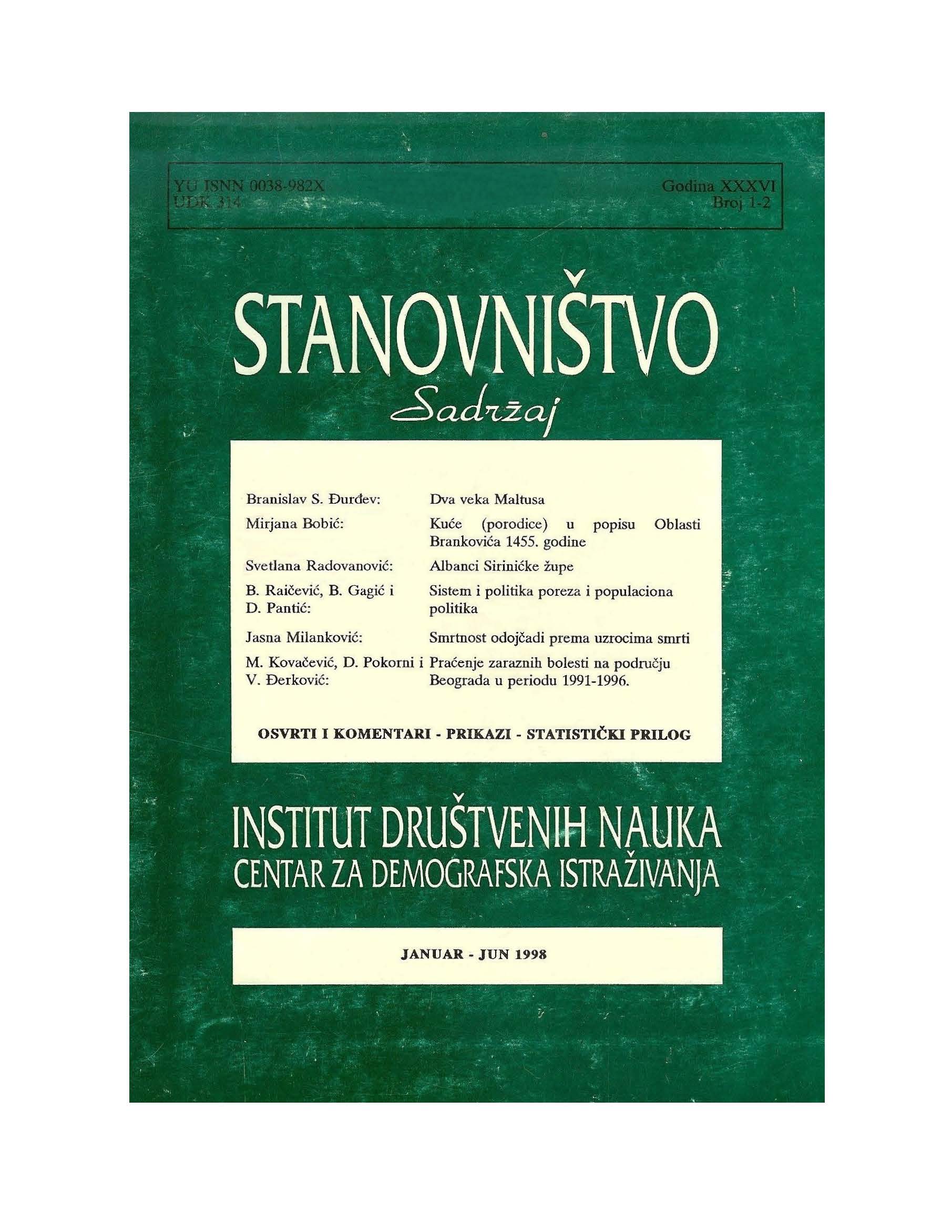Two Centuries of Malthus
Main Article Content
Abstract
The article is an endeavour to comparatively review classic and modern theories and/or theoretical concepts regarding relationship between population development and the overall sustainable development. On the second centennial anniversary of the first essay that initiated numerous discussions regarding this relationship, it cannot be said that the scientific elite is any nearer the consensus. Not only that the hypothesis of Malthus, Neo-Malthusians and Marxist thinkers are being built upon, but completely new ideas regarding this relationship are springing up. Disregarding the ideological differences but placing emphasis on the technological discrepancies prevailing to this day, the article also indicates that these apparently irreconcilable theories can permeate and complement each other. The Malthusian theory could be valid in a peasant society, but the socialists pointed to its flows in the industrial society. The Neo-Malthusians modernized the teachings of Malthus and in the "Limits to Growth" we find a more exact support to the fears of Neo-Malthusians. The theo1y of E. Boserup provides not only a consistent explanation of the relationship between population growth so far and sustainable development but also points to the essence of theoretical differences. On the short run, at a certain technological level (that is, manner of production) everybody is in the right: constant growth in population ultimately results in declining yields (excess population). On the long run, critical mass of population creates a new technological level which, in the beginning, requires higher population density (new "laws" of the population).
Downloads
Article Details

This work is licensed under a Creative Commons Attribution-NonCommercial 4.0 International License.
Published by the Institute of Social Sciences - Center for Demographic Research





